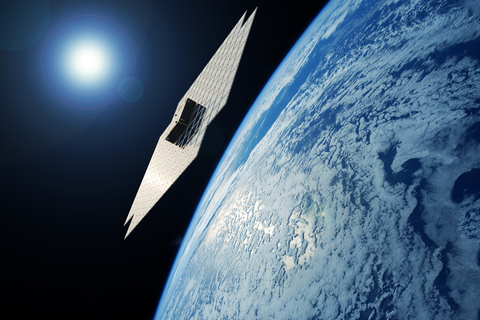AST SpaceMobile provided a business update this week, as it preps for the launch of its first five satellites to support a commercial direct-to-cellular service. That long-anticipated launch is expected in the first half of September.
“We stand at a pivotal moment for AST SpaceMobile,” said Abel Avellan, who is founder, chairman and CEO of AST SpaceMobile. “The arrival of our first five commercial satellites at the launch site marks the culmination of years of relentless innovation and perseverance, in partnership with industry leaders like AT&T, Google, Verizon, Vodafone, and Rakuten, among others. The upcoming orbital launch is a significant step toward fulfilling our mission to eliminate dead zones and empower communities worldwide with space-based cellular broadband connectivity.”
Among the takeaways from the company’s update for its most recent quarter:
-AST’s five BlueBird satellites, which it says are “each the largest-ever communications arrays to be deployed commercially in low Earth orbit” are currently at Cape Canaveral in Florida, preparing for launch vehicle integration ahead of the expected September launch. The company recently received Federal Communications Commission approval for operating those satellites.
-AST SpaceMobile added Verizon to its roster of backers in May, with a strategic investment of $100 million that included a $35 million loan and $65 million in commercial prepayments. AST will also gain access to Verizon’s 850 MHz spectrum for service; it has a similar deal with AT&T, which the satellite company said will enable it to provide approximately 100% geographical coverage of the continental United States via 850 MHz.
-AST said that it should have “initial nationwide, non-continuous service” available with AT&T and Verizon beta test users after in-orbit service activation over the coming months. It will expand coverage and service availability as its satellite constellation expands.
-In terms of that expansion, the company said that the planning and production of 17 BlueBird satellites in its “Block 2” phase is underway at its manufacturing facilities in Texas.
-AST said it is also “[continuing] to advance discussions with additional strategic partners, following the blueprint of commercial prepayments alongside commercial agreements.”
-Its operating expenses for the quarter were $63.9 million, up from $56 million in the first quarter of this year. AST said that it had a $5.6 million increase in general and administrative costs, $1.7 million more in engineering services expenses and that the figure also included $29.3 million in depreciation and amortization and stock-based compensation expenses.
-The company said that it has thus far incurred nearly $348 million in costs to support the design, build, launch and ground systems for its BlueBird satellites and its BlueWalker 3 satellite, the latter of which is already in orbit.
-AST has just shy of $290 million in cash, cash equivalents and restricted cash as of June 30, plus another $51.5 million in credit that it can draw upon.
In related news, rival satellite direct-to-cellular provider Skylo announced this week that its Non-Terrestrial Network (NTN) connectivity is integrated into the new Google Pixel 9 smartphone series, to support emergency communications when a terrestrial cellular network is not available.
According to a Google blog post about the devices’ capabilities, the Pixel 9 series are the Android devices first to support its Satellite SOS offering, which enables an “emergency questionnaire” describing the user’s situation and location to be sent to first responders, as well as notifying their phone contacts of the emergency. That two-way texting service is only available in the continental United States; it requires that users have Google Message as their default messaging app, but is “available regardless of you carrier plan,” per the post.

